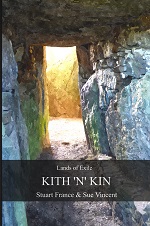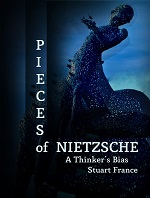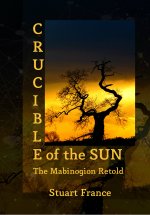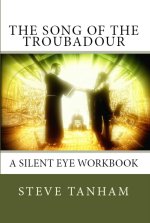
Dragon Hill and the Manger from White Horse Hill, Uffington
Way back when the world was warm and the sun remembered to shine, our friend, Gary Vasey, came over from the Czech Republic for a weekend. It was to be our second meeting in the going-on-fifteen-years that we have been close friends, and it was a memorable one for a good many reasons. We wanted to share some of the places that had played such important roles in The Initiate, the first of the books Stuart and I wrote together, which Gary had called ““, sharing our excitement in the journey. So we took him, amongst other places, to Uffington, and while we were in the area, we finally managed to find the Blowing Stone.

We had tried to run it to earth on several occasions but had succeeded only in finding the pub that bears its name and likeness, where we seemed to recall the stone should be… but it was not there. This time, however, we turned away from Kingston Lisle at the crossroads and immediately spotted the shy little sarsen stone, hiding in a cottage garden. The cottage used to be the old Blowingstone Inn, but now it sits quietly, away from the village, waiting for those who would seek out its secrets.

It doesn’t look much, at first glance… just a small lump of rock by the roadside…. but between legend, function and history, it has a lot to say for itself. It was once called the King Stone and although there is speculation that it may have stood on White Horse Hill, near the ancient hill figure that has watched over the valley for thousands of years, being moved to this spot in the mid-nineteenth century, the legends suggest that it has always stood at a distance from that place. It may have been called the King Stone because the Saxon King Alfred used it to summon his army to fight the Danes at Ashdown in 871, but I think it is more likely to have something to do with the rituals of kingmaking; for the legends tell that he who sounds the stone, making it heard on White Horse Hill, miles away, will be King of England.

The Blowing Stone is about three feet square, and is a ‘holed stone’, with tunnels running through the rock which may have been carved by prehistoric tree roots… or not. No-one is really sure. Most of the holes only penetrate the surface, but some go all the way through, and it is these that give the stone its magical qualities and its deep, booming note. The hole at the top is worn, where thousands of hands and lips have cupped it, seeking to coax the magic from the stone. We all tried, but only Gary, a musician, was able to get anything like a clear note from the rock, and not loudly enough to make a serious bid for the throne.

Oddly enough, I had first come across tales of the Blowing Stone in a work of fiction… William Horwood’s Duncton Wood… where it is one of the stones sacred to the moles. Curious, because so many of the places he mentions were known to me, I looked it up and was surprised to find it a reality. I still never thought I would see it, though, or make the futile attempt to bring its spirit to life with my breath. I wonder if that was part of the rite? That he who could awaken the spirit of the stones was deemed fit to rule? For, once upon a time, when the land was held sacred, its rulers may have served as both its priest and king. I wonder if the loss of that sense of sacredness and service is where we are going wrong?

Although we could not sound the stone, the process ties in with our own research and theories about the qualities and uses of sound and resonance in these ancient places. There is archaeological speculation that the stones of Stonehenge may have been used to create music, and scientific suggestions that the carvings in some of the ancient tombs may represent the waves created by sound within them; archaeoacoustics is getting interesting.

But beyond the science, there is the feeling and the magic of stepping back in time when you hear the stones sing. We could not coax song from the stones, but others have done so… and you have only to close your eyes and listen to hear the song of the Blowing Stone…









































Reblogged this on anita dawes and jaye marie.
LikeLiked by 2 people
Reblogged this on Campbells World.
LikeLiked by 2 people
The man in the video is obviously a brass player and used a lip buzz. The rock is a great resonator, so, hit the right sound… I need to come over and give it a try 😉 I do believe in the philosopher king but I think a philosopher and musician combined would be an even better king. If Bob Dylan was our president over here, things would be different 😉
LikeLiked by 3 people
He is a musician… and gets a great sound from the stone. yes, you do need to come over and try it, Trent 😉
LikeLiked by 3 people
Rather funny that he’s all decked out in a suit to blow in a stone 🙂 Creates a cool sound, though.
LikeLiked by 1 person
I know… a tad incongruous, but he certainly made it sound.
LikeLiked by 2 people
Fascinating.
LikeLiked by 1 person
Sound and stones seem to go together in a way we are only just rediscovering.
LikeLiked by 1 person
Thanks, Neil. It is a growing, interdisciplinary area of investigation…and really is fascinating.
LikeLiked by 1 person
That was amazing!
LikeLiked by 1 person
Fabulous, isn’t it?
LikeLiked by 2 people
Oh wow, I remember. I love Duncton Wood, it’s one of my all time favourites. xxx
LikeLiked by 1 person
I haven’t read it for years… but thi sis the same Blowing Stone he mentions 🙂
LikeLiked by 2 people
Okay, that was just amazing!!!!! 🙂 xxx
LikeLiked by 1 person
It was quite something to be there when Gary got sound… let alone hearing it sounded properly 🙂 xx
LikeLiked by 2 people
I can only imagine!!! 🙂 xx
LikeLiked by 2 people
Reblogged this on Where Genres Collide.
LikeLiked by 1 person
Thank you for sharing, Traci.
LikeLiked by 2 people
You’re welcome, Sue!
LikeLiked by 2 people
My kind of rock music. 😀
LikeLiked by 2 people
😀
LikeLiked by 2 people
It does sound like it might have been from the very first rock band! Sorry, I couldn’t help myself.
LikeLiked by 2 people
Neither could I 😉
LikeLiked by 1 person
Interesting! Though a lot less portable than a conch. 😉
LikeLiked by 1 person
It has a bit more presence though…and we don’t have large seashells around here all that often 😉
LikeLiked by 2 people
That is fascinating, Sue. And the sound is reminiscent of blowing through an ancient long horn. Perhaps I have watched too many movies. 🙂
LikeLiked by 1 person
It does sound rather like that 🙂
LikeLiked by 2 people
🙂
LikeLiked by 2 people
That was a fun day……
LikeLiked by 1 person
It was 😀
LikeLiked by 1 person